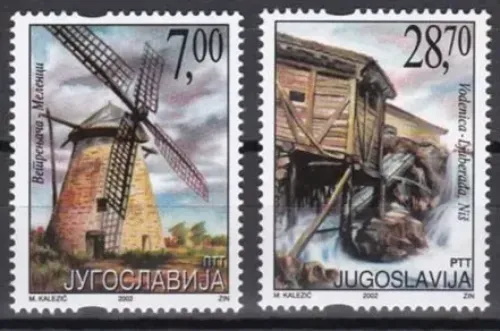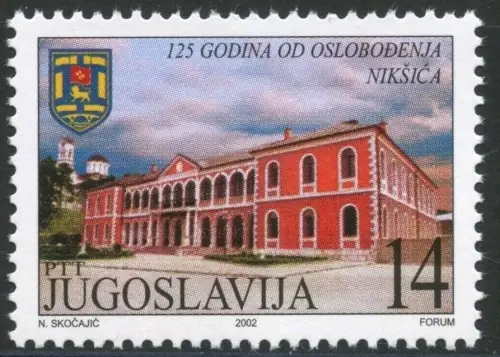Serbia year 2002 stamps – Architecture Mills full set MNH**
Serbia, with its rich history and diverse landscapes, features various examples of traditional architecture, including mills. Mills played a crucial role in Serbia’s agricultural economy, particularly in rural areas where they were used for grinding grains and processing various agricultural products.
Watermills were commonly found along rivers and streams throughout Serbia. These mills utilized the power of flowing water to turn millstones and grind grains into flour. Traditional Serbian watermills typically featured a simple design, with a waterwheel attached to a shaft that transferred power to the grinding mechanism inside the mill.
While less common than watermills, windmills were also used in certain regions of Serbia, particularly in areas with suitable wind conditions. Serbian windmills were typically built with wooden structures and large rotating sails that captured the wind’s energy to turn the millstones and grind grains.
The architecture of Serbian mills varied depending on regional traditions, available materials, and local building techniques. In some areas, mills were constructed from stone or brick, while in others, they were built using timber or a combination of materials. Traditional Serbian mills often featured simple, functional designs adapted to their specific location and purpose.
Serbian mills were commonly situated in rural areas near water sources or open landscapes with ample wind exposure. They were often clustered along rivers and streams, where water power could be harnessed efficiently, or on elevated plains where windmills could take advantage of prevailing winds.
Serbian mills are an important part of the country’s cultural heritage, reflecting its agricultural traditions and rural way of life. While many traditional mills have been abandoned or replaced by modern machinery, efforts are underway to preserve and restore these historic structures as symbols of Serbia’s cultural identity and architectural heritage.
Overall, Serbian mill architecture represents an integral aspect of the country’s rural landscape and historical development, serving as a testament to the ingenuity and resourcefulness of its inhabitants throughout the centuries.












Reviews
There are no reviews yet.